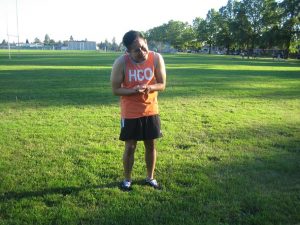Trigger finger is characterized as a tender condition that activates the locking of the fingers or thumb once bent. Generally, trigger finger occurs when the tendons in the finger or thumb becomes inflamed. The tendons are strong bands of tissues that function in connecting muscles and bones. In addition, the tendons and muscles in the hands and arms straighten the thumbs and fingers.
[youtube url=”https://www.youtube.com/watch?v=iAIzUb4cl4M” width=”220″]A tendon glides through the tissue that is covering it which is called a sheath due to a lubricating membrane that surrounds the joint called the synovium. Sometimes, tendons can become inflamed and swollen in which bending of the fingers or thumb pulls the inflamed tendon through a narrowed tendon sheath which causes it to pop or snap.
Generally, farmers, musicians and industrial workers are more susceptible to trigger finger due to repeated movements of the fingers and thumb. Smokers are also susceptible to the condition due to repeated use of a lighter. Women are more susceptible to trigger finger than in men and usually happens between the ages 40-60 years old.
Causes of trigger finger
- Performing repetitive movements of the fingers and gripping for long periods of time such as playing an instrument and operating machinery.
- Conditions such as rheumatoid arthritis, diabetes and hypothyroidism can cause trigger finger.
- Lastly, previous injury to the tendon of the fingers can result to buildup of scar tissue.
Symptoms

- At first, a painful clicking and popping sound when straightening the finger.
- Stiffness
- Formation of a nodule at the base of the finger.
- In addition, tenderness at the base of the finger
- Lastly, the fingers in a bent position
Management of trigger finger
- Wear an aluminum-based flexion finger splint. Generally, these splints have a rigid aluminum casing that supports the finger in place as it starts to heal. Apply the splint on the palm side of the affected finger with the foam touching the skin and should fit the size of the finger. Press the splint into the slightly curved shape to make the finger comfortable. Secure it with a strap or metal arms and leave the finger splint in place for at least 2 weeks to lessen the pain and inflammation and return of finger to its full range of motion.
- Avoid performing activities that can make the condition worse such as performing strenuous physical activities that requires the use of the hands such as in football, basketball and baseball.
- Avoid using the splinted finger when lifting something heavy or for supporting the weight of the body.
- Take the prescribed over-the-counter non-steroidal anti-inflammatory drugs (NSAIDs) such as ibuprofen and naproxen to lessen the pain, swelling and inflammation.
If the symptoms of trigger finger are persistent and does not seem to subside, seek medical help immediately.
FACT CHECK
https://orthoinfo.aaos.org/en/diseases–conditions/trigger-finger
https://www.webmd.com/rheumatoid-arthritis/guide/trigger-finger#1
https://www.mayoclinic.org/diseases-conditions/trigger-finger/symptoms-causes/syc-20365100

